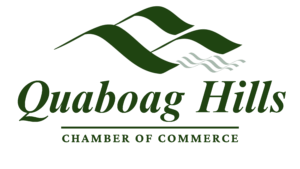Building Lasting Vendor Relationships — A Practical Guide for Quaboag Hills Business Owners
Vendors and suppliers aren’t just external partners — they’re the lifeblood of your operations. Whether you’re running a manufacturing company in Warren or a small retail store in Palmer, your ability to communicate clearly, build trust, and collaborate consistently can make or break long-term success.
TL;DR:
Strong vendor relationships don’t happen by accident. They’re built on transparency, respect, regular dialogue, and a shared vision for growth. When businesses invest in trust, they gain not just reliability but mutual opportunity — better pricing, faster support, and dependable partnerships.
Why Communication Is the True Currency
Most business disputes with vendors stem from unclear expectations. Setting terms upfront — not just in contracts but in conversations — prevents surprises later.
Here’s what clear communication actually looks like:
-
Regular updates: Schedule short monthly check-ins via video or email.
-
Transparent pricing talks: Discuss market fluctuations openly before they impact invoices.
-
Feedback channels: Encourage vendors to share what’s working (and what’s not).
For added structure, business owners can explore management tools like Trello, Asana, or Basecamp to organize discussions and track supplier tasks in real time.
Keeping Vendor Partnerships Healthy
Use this simple checklist every quarter to make sure your relationships are on track:
|
Health Metric |
Action to Take |
Frequency |
|
Communication clarity |
Review contracts and verbal agreements |
Quarterly |
|
Responsiveness |
Track average reply time from vendor |
Monthly |
|
Financial transparency |
Review invoices and terms for accuracy |
Every payment cycle |
|
Mutual goals |
Align business priorities and growth plans |
Bi-annually |
|
Trust signals |
Ask: “Would I recommend this partner to another business?” |
Annually |
How to Strengthen Trust Over Time
Problem: Many partnerships fade because one side feels unseen or undervalued.
Solution: Build trust through predictability and shared wins.
Result: Vendors begin to prioritize your business — often going the extra mile.
Practical ways to reinforce trust:
Celebrate milestones (like delivery records or anniversaries).
Keep small promises — they prove bigger commitments are safe.
You can also adopt accounting systems such as QuickBooks or Wave for payment reliability and vendor visibility.
Clarifying Agreements with a Letter of Intent
Before you formalize a contract, creating a Letter of Intent (LOI) can help both sides define scope, deadlines, and expectations. A digital document tool can make this process easier — and legally cleaner.
Learn more about what is a letter of intent and how it can prevent misunderstandings while strengthening early trust between you and your suppliers.
Collaboration: The Secret Ingredient
Collaboration is more than coexisting — it’s co-creating. Invite your suppliers into your planning process. Share insights on customer demand, upcoming product launches, or logistics forecasts. The more context they have, the better they can serve you.
You can even use shared project platforms like Monday.com or Slack for unified communication and file sharing.
Spotlight: A Helpful Resource
For businesses juggling multiple vendors, HubSpot CRM offers a free tier that tracks communication history and relationship timelines. It’s not just for sales — it’s an excellent vendor management tool to keep everyone accountable and aligned.
FAQ — Common Vendor Relationship Questions
Q1: What should I do if a vendor consistently misses deadlines?
A: Start with a candid conversation — not an accusation. Identify whether the issue is capacity, communication, or unclear expectations. Then document agreed resolutions.
Q2: How often should I review contracts?
A: At least annually, or whenever you make significant operational changes.
Q3: Should I work with multiple vendors for the same product?
A: Yes, where feasible. It creates healthy competition and ensures supply continuity.
Q4: What if a supplier raises prices unexpectedly?
A: Request transparency. Ask for reasoning tied to materials or logistics costs, and discuss shared solutions like bulk orders or flexible payment terms.
Building long-term vendor relationships is less about managing contracts and more about managing trust. The business owners of Quaboag Hills can set the local standard: lead with clarity, communicate with integrity, and collaborate like your success depends on it — because it does.
When businesses and suppliers grow together, communities thrive together.
